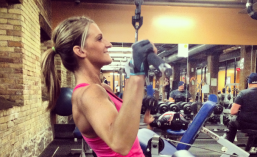Stretching- Common Misconceptions: Static vs. Dynamic
Stretching is commonly used by athletes, rehabilitation patients, older adults, and anyone who may be participating in a physical activity. Although stretching has many benefits, there are a lot of misconceptions as to which types of stretching will help you reach a particular goal or outcome.
Human movement is dependent on our range of motion (ROM), which is available in our synovial joints. In general your range of motion may be limited to 2 anatomical entities: joint and muscles. Your muscle provides both active and passive tension. Differences are that muscle tension is dependent on the structural properties of the muscle, and whether the tension is active or passive. Structurally, muscles have properties that provide both a passive tension (viscoelasticity), and active tension (neuroreflexive).
When someone says “my muscles are really tight” they are referring to the results of increased tension from active or passive mechanisms. Passively, muscles are shortened through postural adaptations’ or scarring. While actively, muscles can become shorter through due to spasms or contraction. Overall what muscle tightness does is it limits one’s ability to complete full range of motion and can cause a muscle imbalance.
It is important to use appropriate stretching techniques to improve muscle tension, depending on the cause of the tightness.
These are the commonly used stretching techniques.
1. Static Stretching: means that the stretch is held in a challenging yet comfortable position for 10 to 30 seconds. Static stretching is the most common form of stretching found for general fitness and is considered a safe and effective form of stretching for overall flexibility improvement. However, static stretching is much less beneficial than dynamic stretching for improving range of motion for functional movement, including sports and activities for daily life. Static stretching can also be performed passively by a partner, or actively by yourself.
2. Dynamic Stretching: means a stretch is performed by moving through a challenging but comfortable range of motion repeatedly, usually 10 to 12 times. Although dynamic stretching requires more thoughtful coordination than static stretching (because of the movement involved), it is gaining favor among athletes, coaches, trainers, and physical therapists because of its apparent benefits in improving functional range of motion and mobility in sports and activities for daily living.
3. Active Stretching: means you are stretching a muscle by actively contracting the muscle, in opposition to the one you’re stretching. With active stretching you relax the muscle you’re trying to stretch and rely on the opposing muscle to initiate the stretch. Active stretching can be challenging however, because of the muscular force required to generate the stretch, but is generally considered a lower risk because you are controlling the stretch force with your own strength, rather than an external force.
4. Passive Stretching: means you’re using some side of outside assistance to help you achieve your stretching capability. This assistance can be your body weight, a strap, leverage, gravity, another person, or a stretching device. With passive stretching you are relaxing the muscle you are trying to stretch and rely on the external force to hold you in place. You usually don’t have to work very hard to do a passive stretch, but there is always a risk involved with using an external force, because it will be stronger than you are flexible, which may result in injury.
5. Pre-Contraction Stretching: involves a contraction of the muscle being stretched. This is better known in exercise physiology as proprioceptive neuromuscular facilitation (PNF) stretching or active isolated stretching. These techniques are all simply variations of these four types of stretches. Pre contraction stretching includes; contract relax, and hold relax. The last one being the contract relax agonist contract. What this would mean is I would have my client contract the muscle being used during the technique at 75% to 100% of maximal their maximal contraction (hold for 10 seconds), and then relax.
In conclusion:
Most stretches you see and do are likely static-passive stretches. Static-passive stretches are the most commonly used and also the easiest to perform. If performed correctly with good technique, these stretches can be effective in improving range of motion and flexibility. Because dynamic-active stretches require you to use and build your own strength while moving through the stretch, it is more helpful for improving functional movements used in everyday life and in sports. In addition since dynamic-active stretching is more movement oriented, these stretches help to generate heat and warm up the muscles, making the muscles more flexible. Finally, evidence does suggest that since dynamic-active stretching requires muscle activation and contraction, the muscles being stretched are triggered to relax even more than they might if during a static-passive stretch, thereby reducing the risk of injury while increasing functional benefits.
For a well rounded exercise program the American College of Sports Medicine recommends static stretching for most individuals that is preceded by an active warm up, at least 2 to 3 days per week. Each stretch is to be held 15-30 seconds and repeated 2 to 4 times. Older adults may need longer stretch time. After 40 years of age it is recommended that stretches be held 30-60 seconds long for static stretches, showing greater improvements in older adults compared to shorter duration holds.
For athletes and exercise stretching performed as part of a warm-up prior to exercise is thought to reduce passive stiffness and increase range of movement during exercise. In general, it appears that static stretching is most beneficial for athletes requiring flexibility for their sports (e.g. gymnastics, dance, etc.). Dynamic stretching may be better suited for athletes requiring running or jumping performance during their sport such as basketball players or sprinters.
Stretching has not been shown to be effective at reducing the incidence of overall injuries. While there is some evidence of stretching reducing musculo-tendinous injuries, more evidence is needed to determine if stretching programs alone can reduce muscular injuries.
